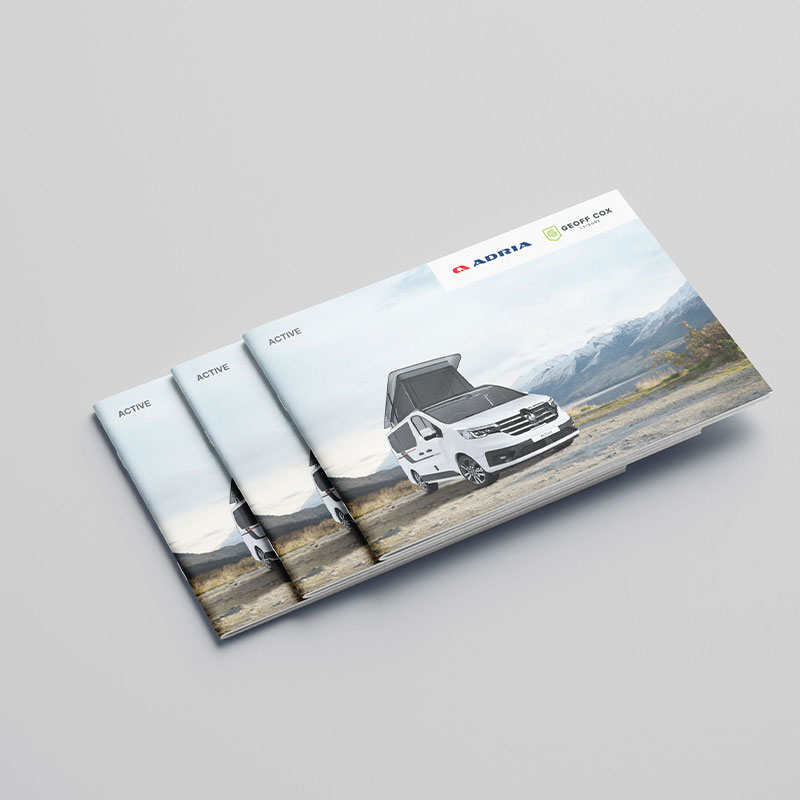Want to receive the best out of your order?
Here’s some tips to know where the design & print pitfalls lie and how to avoid them, especially if you are sending us your own artwork to be printed.
1) Not adding enough Bleed
One of the common design & printing mistakes made by people doing their own design is not allowing enough bleed on the artwork.
The bleed is the artwork which goes past the document edges. You should allow at least 2.5mm for bleed, and if you have large format items (posters/banners etc) then you will want to allow even more bleed room because of the larger size.
This is to allow for any inconsistencies in paper stock and movement during the printing and finishing process.
2) Not converting to CMYK for digital printing
Like most digital printing machines, our Xerox Versant 3100 runs using a CMYK toner system – Cyan (blue), Magenta (pink), Yellow and K (black), so saving your file and images in a CMYK format is best.
If you have both CMYK and RGB colours within your file, even if they look the same on screen, they will print differently when printed.
3) Spelling Errors
Errors in spelling are way more common than you might imagine. We all make them once in a while, however this is a big no-no when you are creating your own business or marketing materials because it calls your professionalism into question.
Spelling and grammar gaffes are sometimes easy to miss. We always send a PDF proof our designs for you to double-check before printing, but if you are designing it yourself, get a second and even third set of eyes to review. Also it’s always best to look at any proofs and files on a desktop computer, not a phone where errors may not be picked up on or as easily of noticed on the smaller screen size.
4) Poor Image Resolution
Improper image resolution is another one of the most common design and print mistakes. If you use a resolution that is too low, your images will not be crisp, clear, and high quality.
A minimum image resolution of 300-400 ppi should be used if you want the best looking images and graphics with your items.
These can be downloaded from royalty-free image sites (we use Shuttershock and Adobe Stock) or taken properly yourself or professional photographer. Images taken off Google, saved off generic websites or from social media may not be useful.
5) Using the Wrong File Formats for Printing
One important consideration is the file formats that are used, and this is an area where many printing mistakes occur.
For print projects, print ready PDF’s, InDesign & Illustrator files are best.
Avoid .png and .gif file formats – These are image formats that are on screen only, and they do not translate well to the print process. Both the formats will handle 72 ppi, but the ppi needs to be much higher for a print file (as just stated in point 4!).
6) Poor Design
A poor design will lead to a poor finished item, simple as that! There are plenty of bad designs already out there, so it’s always worth putting in the time, effort and to be honest, a little expense to get a top-notch design.
With a better design, it will ensure that your printed items are appealing and effective, and that you stand out from your competitors.
7) Not Using Quiet Borders
One of the design and printing mistakes that you can avoid is not using quiet borders. These borders are similar to buffer zones, and they should be a minimum of 5 mm from the document edge. No text or other important elements should be placed within a quiet border.
Things like design frame borders are a perfect example of making sure it’s at least it is 5mm from the edge. This allows for any inconsistencies and movement during the printing and finishing process.
Quiet borders are also important in orders like wiro-bound books and Calendars – have text and images too close to the edge and it’s going to cut up by the wire.
8) Hard to Read Text
Text readability is extremely important to your final printed project, so make sure you take your customer base into account.
Avoid really fine font styles which can break up during print process and extra small font sizes (5pt or smaller – again the text can break up when printed).
It’s also important to take care when using coloured text on top of coloured backgrounds – do they stand out enough or is the text going to be lost because the colours are too similar.
Line spacing is also important. Crowded, lines and lines of text are often difficult to read and off-putting to readers.





